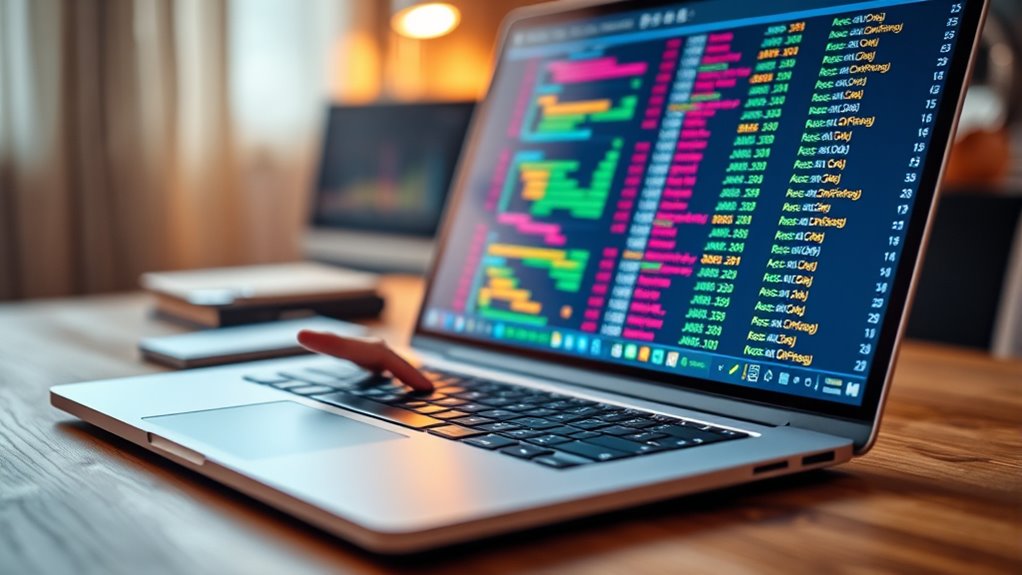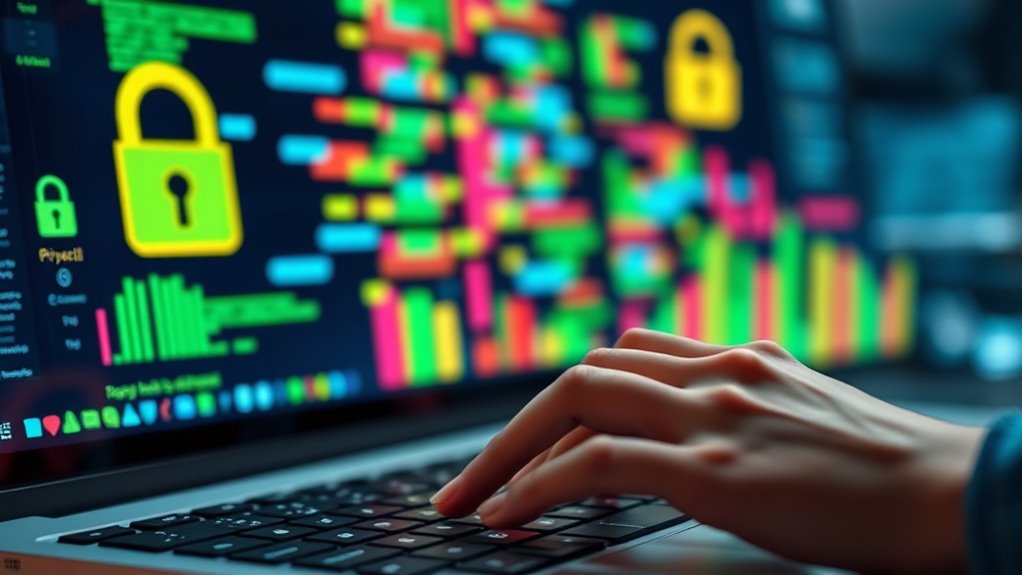To guarantee anonymity and protect personal information in datasets, you should use techniques like masking, generalization, and pseudonymization to obscure identifiable details. Regularly review and update your methods to stay ahead of evolving privacy threats and risks. Incorporate advanced strategies like differential privacy and controlled noise to strengthen protection. Combining these approaches helps maintain data utility while safeguarding privacy. Keep exploring further steps to better understand how to keep personal data secure.
Key Takeaways
- Implement multiple anonymization techniques like masking, generalization, and pseudonymization to obscure identifiable details.
- Continuously review and update privacy measures as new data is added or threats evolve.
- Combine anonymization with advanced methods like differential privacy and controlled noise for stronger protection.
- Understand the specific privacy requirements and context to apply appropriate data protection strategies effectively.
- Recognize that anonymization alone may not prevent re-identification; ongoing risk assessment is essential.

As more organizations collect and analyze vast amounts of personal data, protecting individuals’ privacy has become a critical concern. You need to understand that data anonymization is a key strategy in safeguarding personal information. By applying data anonymization techniques, you can transform datasets in a way that removes or obscures identifiable details, making it difficult to trace information back to specific individuals. This process is essential for privacy preservation because it allows you to share insights and perform analyses without exposing sensitive data. When you anonymize data effectively, you reduce the risk of privacy breaches while still gaining valuable insights from your datasets.
Data anonymization helps protect privacy while enabling valuable data analysis and sharing.
To achieve this, you might use methods like masking, generalization, or pseudonymization. Masking involves hiding specific data points, such as replacing actual names with generic labels. Generalization broadens details—like turning a precise age into an age range—making it harder to identify individuals. Pseudonymization replaces identifiable data with fictitious identifiers, which helps in maintaining data utility while protecting privacy. These techniques help you strike a balance between data usability and confidentiality, ensuring that the dataset retains its analytical value without compromising privacy.
It’s important to remember that data anonymization isn’t a one-time fix but an ongoing process. As new data gets added or as threats evolve, you need to re-evaluate your anonymization methods. This ongoing effort ensures privacy preservation remains effective against emerging risks. You should also consider the context and purpose of your data sharing. Sometimes, more robust anonymization methods are necessary, especially when dealing with highly sensitive information or regulations like GDPR or HIPAA. Understanding your specific privacy requirements helps you choose appropriate techniques, reducing the chance of inadvertent re-identification.
While data anonymization is powerful, it isn’t foolproof. You must be cautious about potential re-identification attacks, where someone combines multiple datasets to reveal personal identities. To mitigate this, you might implement additional privacy-preserving techniques like differential privacy, which introduces controlled noise into the data, further safeguarding identities. Combining multiple methods enhances your overall privacy strategy, making it harder for unauthorized parties to compromise individual identities. Additionally, understanding the contrast ratio of your projector can help ensure that your visualizations or presentations maintain clarity and effectiveness when sharing data insights visually.
Frequently Asked Questions
How Can Organizations Verify Their Anonymization Effectiveness?
You can verify your anonymization effectiveness by evaluating privacy metrics and re-identification risk. Use privacy metrics to measure how well personal data is protected, such as k-anonymity or differential privacy scores. Conduct re-identification risk assessments by testing if anonymized data can be matched back to individuals. Regularly review these metrics and risks to ensure your anonymization methods stay robust against evolving threats.
What Legal Penalties Exist for Data Breaches Involving Personal Information?
When it comes to data breaches involving personal information, the legal landscape is no walk in the park. You could face hefty legal liabilities, including hefty fines and lawsuits. Data breach penalties vary by jurisdiction but often include substantial monetary sanctions and reputational damage. Ignoring these risks is playing with fire, so you must prioritize robust data protection measures to avoid falling into legal hot water and facing severe consequences.
Are There Industry Standards for Dataset Anonymization?
You should follow industry benchmarks and anonymization protocols to safeguard personal data effectively. These standards guide you to de-identify datasets properly, minimizing re-identification risks while maintaining data utility. Many organizations adhere to guidelines like GDPR or HIPAA, which set specific anonymization practices. By applying these industry benchmarks, you ensure your dataset complies with best practices, reduces legal risks, and respects individuals’ privacy.
How Does Anonymization Affect Data Utility for Research?
Anonymization can reduce data utility, potentially impacting your research by limiting the detail and accuracy of insights you can derive. While it protects personal information, overly aggressive anonymization may obscure important patterns or trends, hindering research impact. Striking a balance is vital—using techniques that maintain essential data qualities while safeguarding privacy ensures your research remains meaningful and ethically sound.
Can Anonymized Data Be Re-Identified?
Yes, anonymized data can sometimes be re-identified. For example, in the Netflix Prize dataset, researchers re-identified users by combining anonymized movie ratings with publicly available information. Re-identification risks increase if anonymization techniques like data masking or generalization aren’t robust enough. To prevent this, you should implement strong anonymization techniques and regularly assess re-identification risks, ensuring personal information remains protected.
Conclusion
By anonymizing data, you protect privacy; by securing data, you prevent breaches; by respecting individuals, you build trust. When you prioritize these steps, you create a safer environment for personal information. Remember, safeguarding data isn’t just a task, it’s a responsibility. Stay vigilant, stay proactive, and stay committed to protecting personal information. In doing so, you guarantee privacy, foster trust, and uphold integrity in every dataset you handle.










